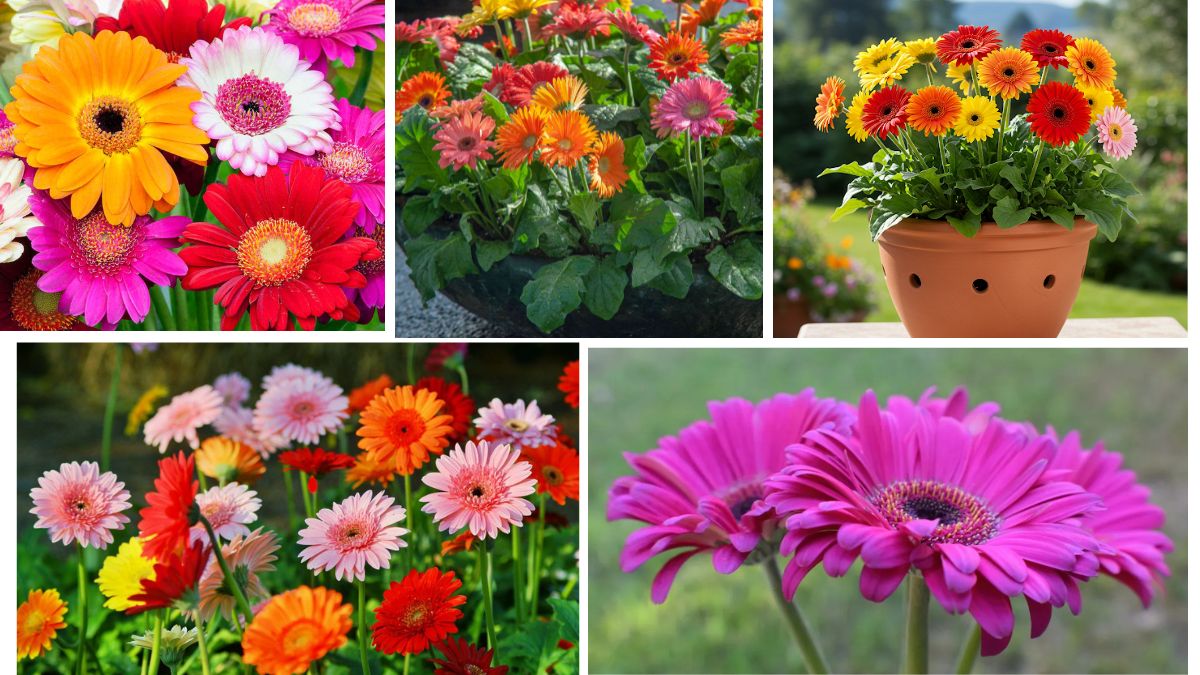Few flowers can match the joyful brilliance of gerberas. With their radiant petals and wide-ranging hues, gerbera daisies bring a touch of cheer wherever they bloom. Whether you’re a seasoned gardener or just discovering your green thumb, gerberas are rewarding flowers to grow and care for. In this comprehensive guide titled “Cheerful Colors: Tips for Growing Gerberas,” we’ll explore everything you need to know to cultivate these stunning flowers—from selecting the right varieties to maintaining healthy plants that bloom in full color.
Introduction: The Joy of Growing Gerberas
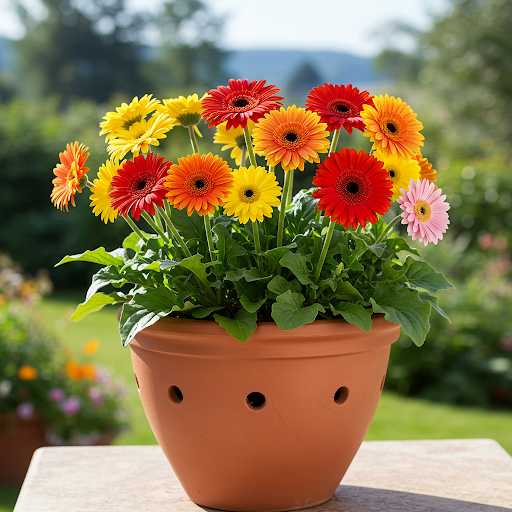
Gerberas (Gerbera jamesonii), native to South Africa, are among the most popular ornamental flowers in the world. Beloved for their bright and bold colors—ranging from hot pinks and vibrant oranges to buttery yellows and snow whites—they’re often used in bouquets, floral arrangements, and garden beds to create a cheerful, uplifting ambiance.
What makes them so special is not just their beauty, but their versatility. Gerberas thrive in gardens, pots, and containers, and are also a favorite in cut-flower production due to their long vase life. With the right care and attention, anyone can enjoy a vibrant garden bursting with these joyful blooms.
1. Choosing the Right Spot: Light Requirements
Gerberas love sunlight, and placing them correctly is key to healthy growth and vivid colors.
Tips:
- Full Sun is Ideal: Plant gerberas in areas that receive at least 6 hours of direct sunlight daily.
- Morning Sun, Afternoon Shade: In hotter climates, provide some afternoon shade to protect them from scorching.
- Indoor Light: If growing indoors, place them near a bright, sunny window, preferably south-facing.
Why it matters: Adequate sunlight enhances photosynthesis and helps the plants produce richer colors and stronger stems.
2. Soil Preparation: Creating the Perfect Bed
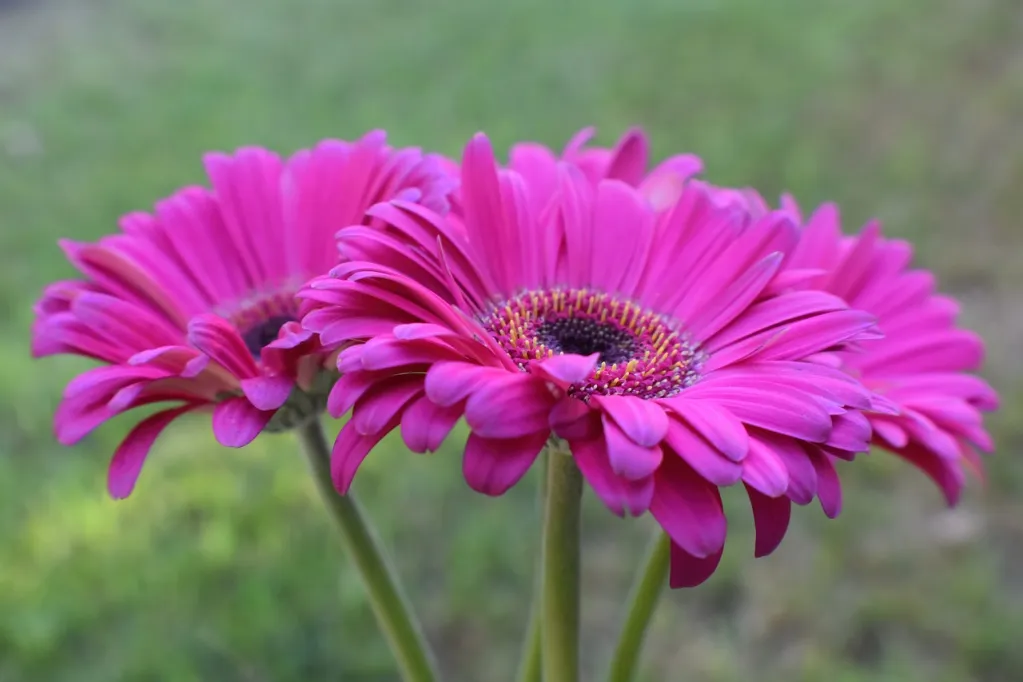
Gerberas prefer well-drained, nutrient-rich soils with slightly acidic to neutral pH.
Tips:
- Ideal pH: Maintain a soil pH between 5.5 and 6.5.
- Add Organic Matter: Mix in compost or well-rotted manure to improve texture and fertility.
- Ensure Drainage: Avoid soggy soil. You can create raised beds or add perlite/sand to enhance drainage.
Pro Tip: Poorly drained soil leads to root rot—a common cause of gerbera failure.
3. Selecting Gerbera Varieties: Colors and Sizes
There are over 30 species and countless hybrids of gerberas, offering different forms, colors, and sizes.
Common Varieties:
- Single Flower Type: Classic daisy-like blooms with a single row of petals.
- Double and Crested Types: Fuller blooms with multiple petal layers.
- Miniature Varieties: Ideal for small spaces or pots.
Popular Colors to Choose From:
- Red: Symbolizes passion
- Yellow: Represents happiness
- Orange: Radiates warmth
- Pink: Expresses admiration
- White: Signifies purity
Choose colors that reflect your personality or match your garden theme for a cheerful, personalized landscape.
4. Watering Wisely: Keeping Gerberas Hydrated
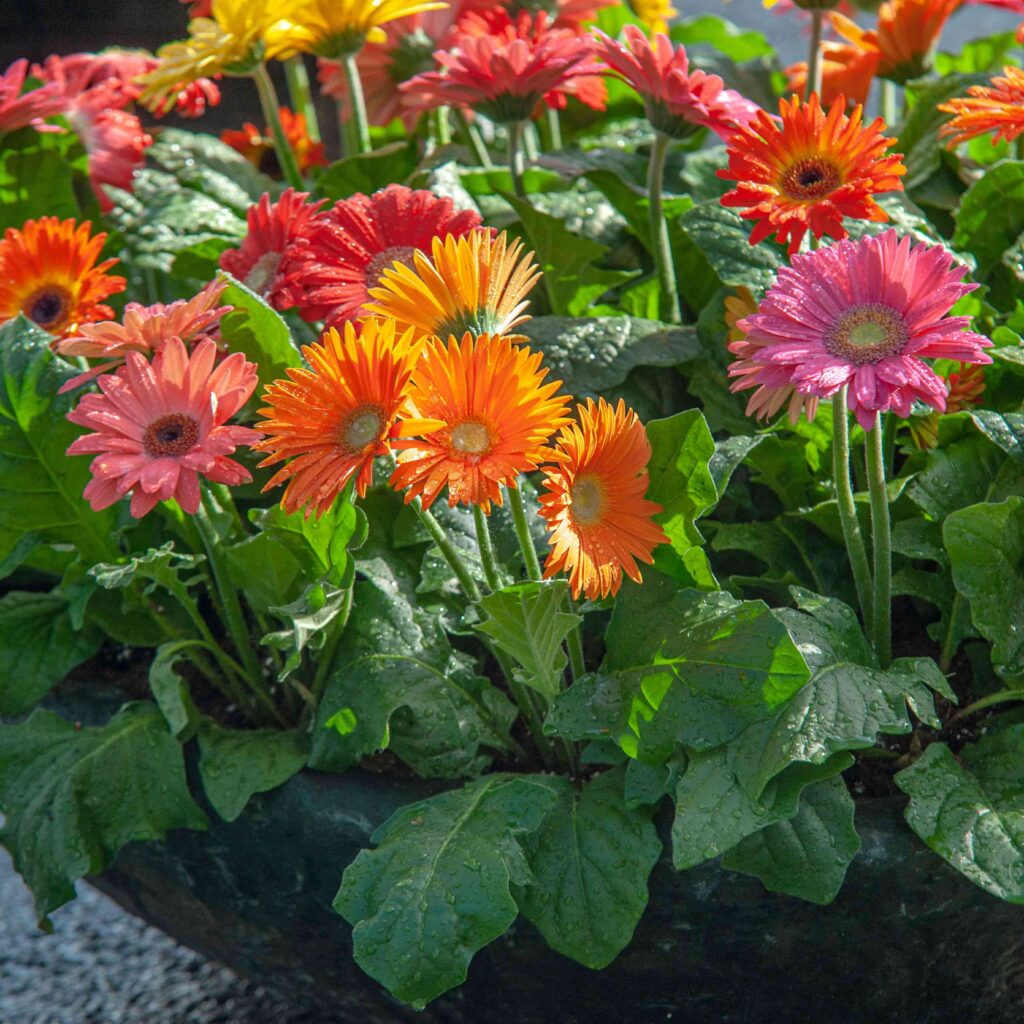
Gerberas need consistent moisture, but they hate “wet feet.”
Watering Guidelines:
- Water at the Base: Avoid wetting the foliage and flowers to prevent fungal infections.
- Frequency: Water 2-3 times a week depending on the weather and soil drainage.
- Check Moisture: Stick your finger 1-2 inches into the soil. If it feels dry, it’s time to water.
Avoid: Overwatering and poor drainage, which cause crown rot—a major threat to gerbera health.
5. Fertilizing for Vibrant Colors
A well-fed gerbera plant blooms more and displays brighter colors.
Fertilizer Tips:
- Balanced Formula: Use a balanced liquid fertilizer (10-10-10 or 20-20-20) every 2–3 weeks during the growing season.
- Boost Blooms: Switch to a bloom booster (higher phosphorus) formula when buds appear.
- Avoid Over-fertilizing: Excess nitrogen can cause lush foliage but fewer blooms.
Organic Options: Fish emulsion, seaweed extract, or compost tea offer gentler nourishment with fewer chemical residues.
6. Growing in Containers: A Versatile Option
Don’t have space for a garden bed? Gerberas thrive in pots and containers too.
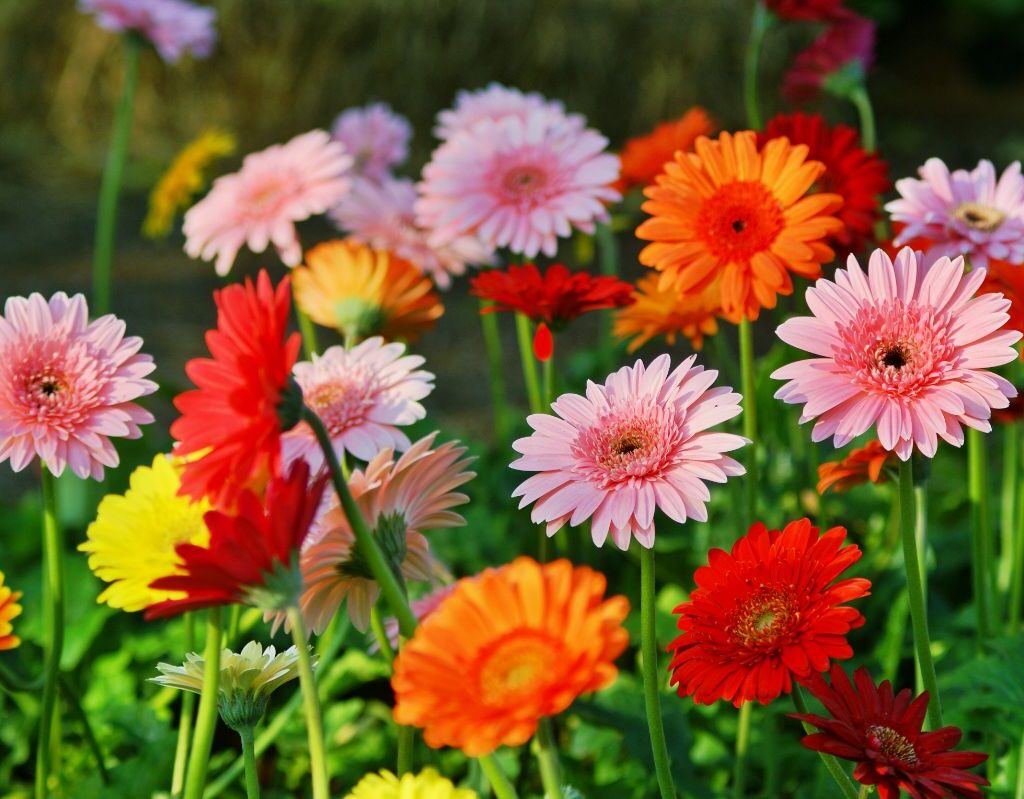
Container Tips:
- Choose a pot with drainage holes.
- Use high-quality potting mix enriched with compost.
- Repot annually to refresh soil and check root health.
- Move pots indoors during frost or heavy rain to protect blooms.
Container-grown gerberas are perfect for balconies, patios, or sunny windowsills—and they add a splash of color to any urban setting.
7. Deadheading and Pruning
Proper maintenance ensures continuous blooming and plant health.
Tips:
- Deadhead regularly: Remove spent flowers at the base to encourage new blooms.
- Trim yellow leaves: This improves airflow and reduces the risk of disease.
- Avoid cutting too close: Leave a bit of the stem to avoid damaging the crown.
Result: Healthier plants and a more vibrant display throughout the season.
8. Common Pests and Problems
Like all flowers, gerberas can face threats from pests and diseases.
Pests to Watch For:
- Aphids: Tiny sap-sucking bugs
- Spider Mites: Thrive in hot, dry conditions
- Whiteflies: Often found on the undersides of leaves
Diseases:
- Powdery Mildew
- Botrytis (gray mold)
- Crown Rot
Prevention & Control:
- Keep foliage dry
- Improve airflow around plants
- Use neem oil or insecticidal soap as a natural treatment
- Remove infected leaves promptly
A proactive approach helps maintain a vibrant, healthy garden.
9. Seasonal Care: Encouraging Year-Round Blooms

While gerberas are typically grown as perennials in warmer climates, they can also be treated as annuals in cooler zones.
Seasonal Tips:
- Spring: Best time for planting; ensure good sun and rich soil.
- Summer: Provide partial shade and consistent watering.
- Fall: Deadhead often and prepare for dormancy.
- Winter: Mulch in cold areas or bring potted plants indoors.
Zone Guide:
- Hardy in USDA zones 8–11; in colder regions, grow as annuals or overwinter indoors.
10. Displaying and Enjoying Your Gerberas
Whether in your garden or as cut flowers indoors, gerberas shine with elegance and joy.
Cut Flower Tips:
- Harvest in the morning when flowers are fully open.
- Use sharp scissors to avoid crushing stems.
- Place in clean water with floral preservative.
- Change water every 2 days to extend vase life (up to 10 days!).
Decor Ideas:
- Pair with baby’s breath or green foliage
- Use color-themed arrangements for events
- Float blooms in shallow bowls for minimalist décor
Conclusion: Bring Cheer to Your Garden with Gerberas
Gerberas are more than just pretty flowers—they’re symbols of happiness, positivity, and warmth. With a rainbow of colors and relatively simple care requirements, these blooms are a must-have for anyone wanting to cultivate a cheerful garden.
By understanding their needs—sunlight, well-drained soil, balanced nutrition, and regular maintenance—you can ensure your gerberas not only grow but thrive, filling your surroundings with joyful color season after season.
So dig in, plant a few, and let the vibrant world of gerberas transform your garden into a paradise of cheerful blooms!
